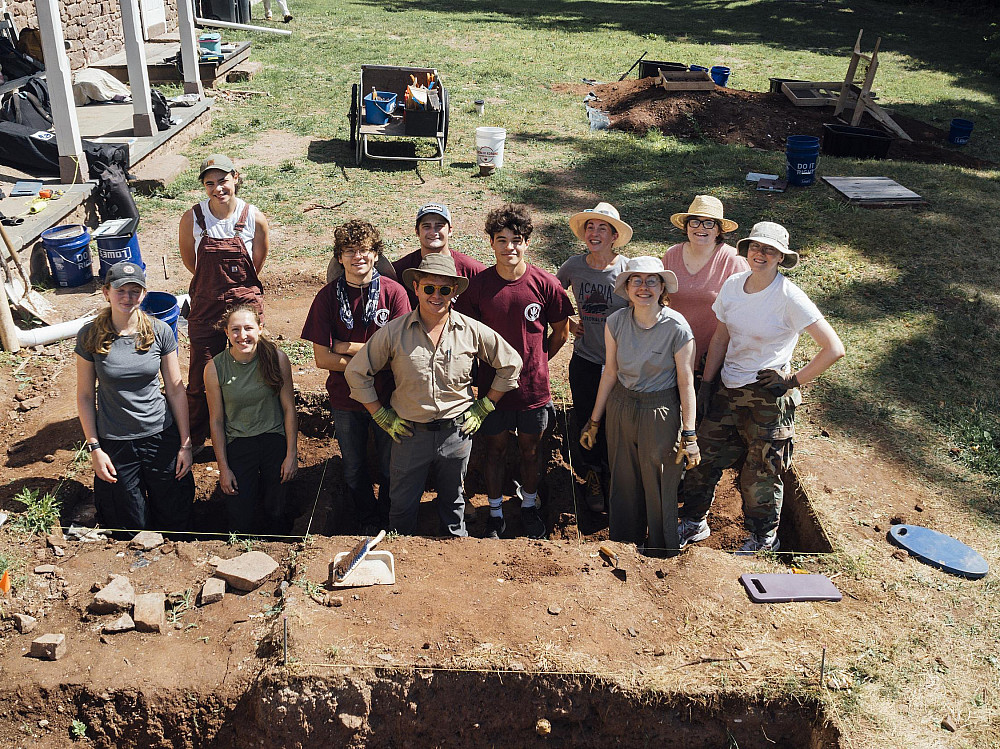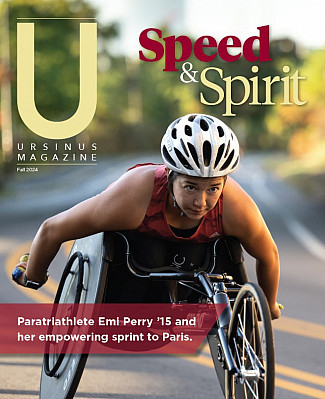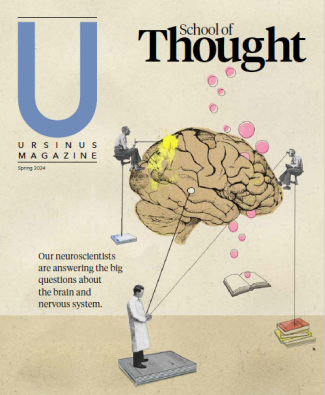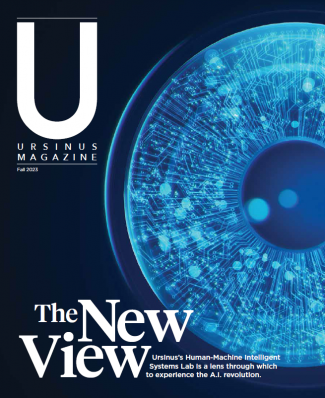History Unearthed
The restoration of the centuries-old Speakers House—once an Ursinus College residence hall—in neighboring Trappe is a passion project decades in the making for historian Lisa Minardi ’04. And she has some help from aspiring Ursinus archaeologists.
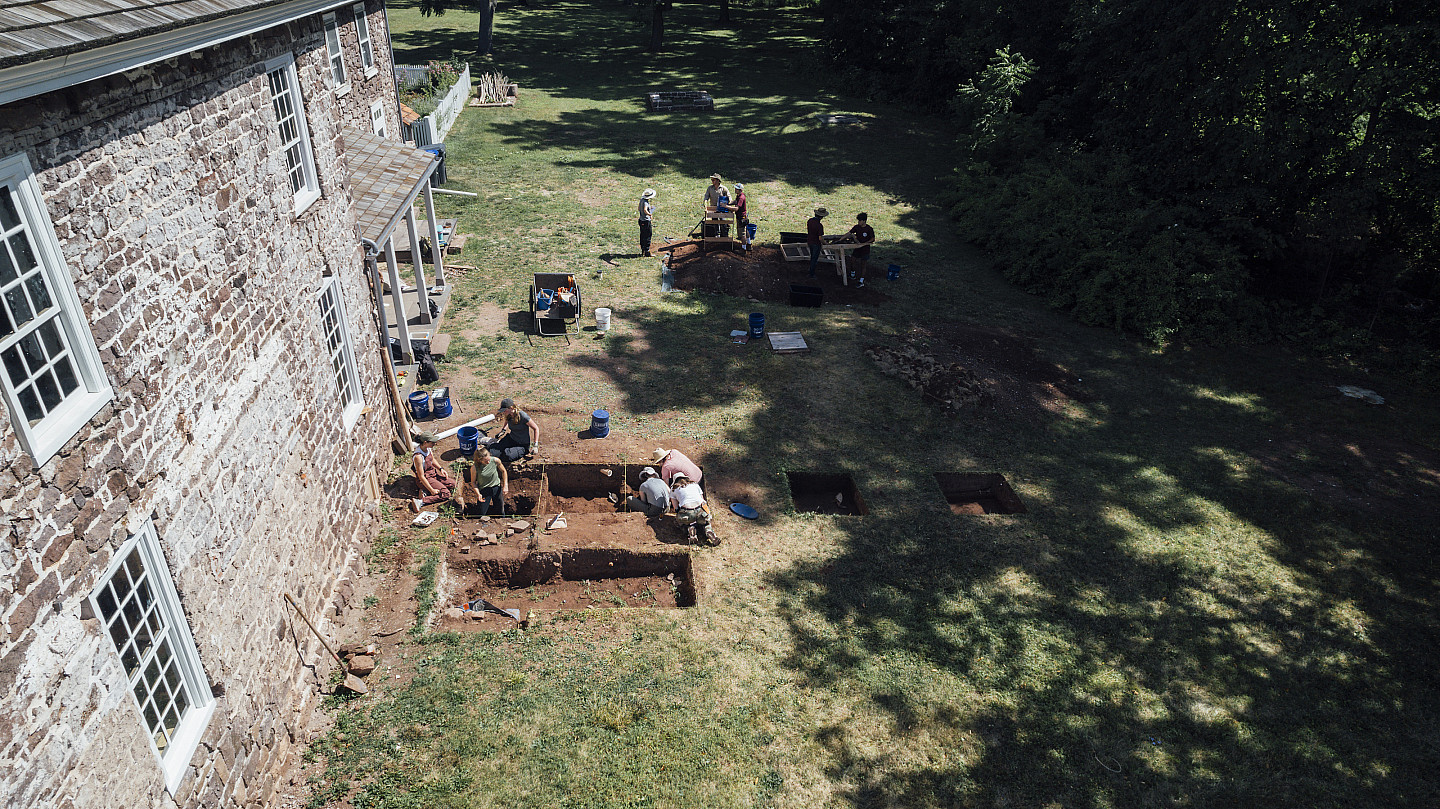
A fragment of ceramic, long forgotten and buried deep underfoot, has a story to tell. Once discarded, but now unearthed and carefully dusted off, it reveals much about the history of the area, and the people who once inhabited it.
“There’s a very direct connection,” said Lisa Minardi ’04, “that’s continually revealing itself.”
For more than 20 years, Minardi, who is executive director of Historic Trappe, has spent a considerable amount of time piecing together a nearly 300-year-old puzzle at 151 W. Main Street—the Speaker’s House—home to Frederick Muhlenberg, the first speaker of the U.S. House of Representatives.
That was, of course, long before the house was an Ursinus College residence hall. But now, as historians like Minardi prepare for the country’s semi-quincentennial in 2026—the 250th anniversary of the signing of the Declaration of Independence—it’s serving a new purpose for Ursinus students: It’s the site of a summer archaeology field school.
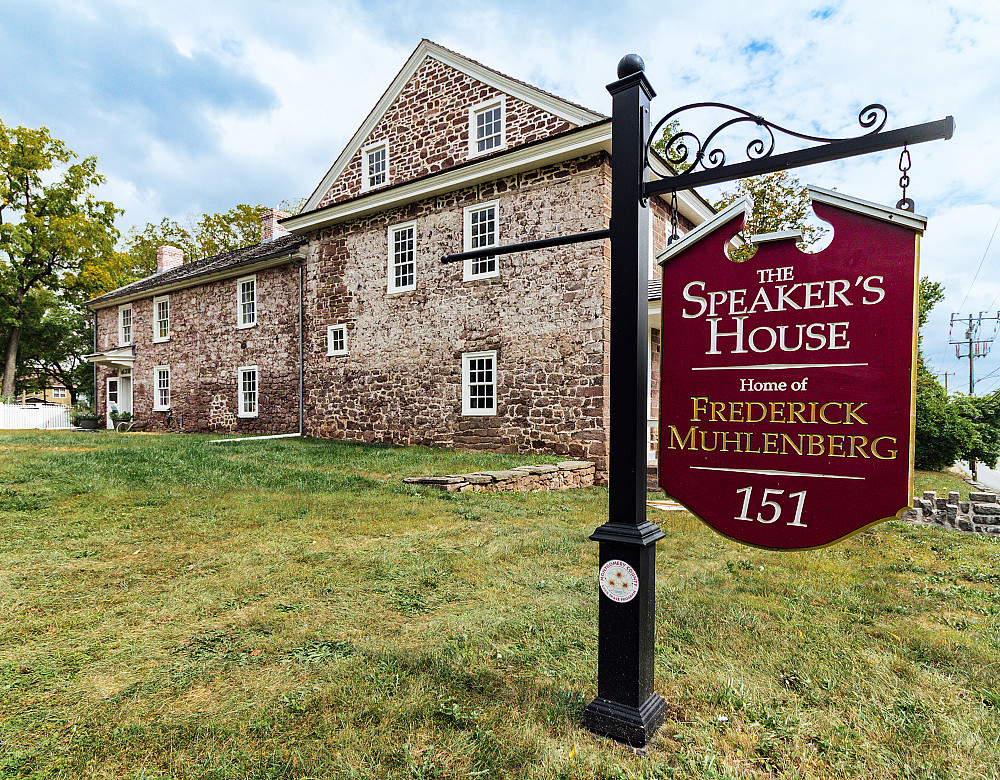
Digging into the Past
History exists all around us. It’s recorded in our books, photos, and Internet databases; immortalized on plaques and monuments; can be visualized in art and antiques; and even visited upon at some of our greatest landmarks. But the history that exists beneath our feet—the history that remains hidden—may tell a greater story and unlock secrets of the past that remain unseen.
Working in the blazing hot summer sun, Ursinus students have over the years excavated pottery, utensils, and other artifacts—even a shoe buckle—that can be tied back to Muhlenberg and his family.
“It may just be a shoe buckle, but it starts to reveal a story about someone who walked a mile in those shoes,” said Aidan Mashael ’26, an Ursinus student from Edina, Minn., who participated in the field school last summer. “It’s one thing to read history, but it’s another to see it and discover it with your own eyes.”
The excavation has revealed several surprises over time, including a smokehouse and a bake oven on the property.
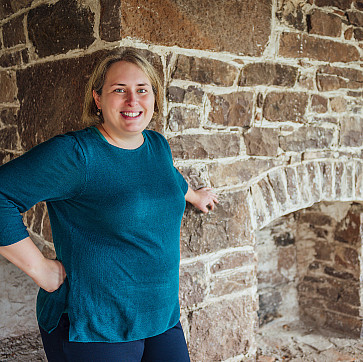
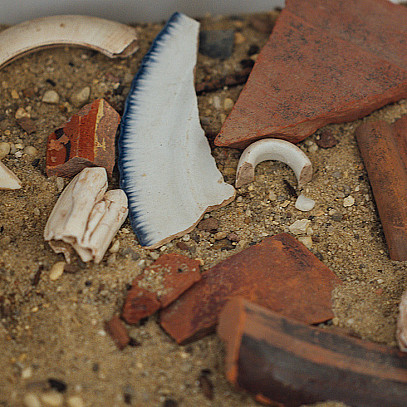
“For some of the first demolition I did, I put my crowbar through a wall that was right over there, not knowing there was a hole where there was a bake oven door,” Minardi said while showing Ursinus Magazine around the house in August. “And that led to, ‘We should do some archaeology outside and find the foundation.’ We fully excavated it, reconstructed it, and now we have a bake oven we can bake bread in.”
While the archaeology field school has been an ongoing program for years, 2024 was the first for Katharine Davis, a visiting instructor of anthropology at Ursinus. Davis led approximately a dozen students from Ursinus and other institutions last summer on a dig project to discover more lost artifacts from Muhlenberg’s time and thereafter. The for-credit class lasted six weeks and started in early June.
Davis, whose own archaeological research mostly takes place in Bolivia, said the Speaker’s House project is significant “because of Minardi’s expertise and her efforts to preserve and promote the importance of the Muhlenbergs and Pennsylvania German families to the history of America and the local community.”
“It’s a practical class that prepares students for employment in cultural resource management firms,” Davis said. “This class mixed with an Ursinus degree means these students could get a job in archaeology excavating anywhere in the U.S.”
What was found has been cleaned and examined, and much of it will be displayed to the public once full renovations are complete.
“It’s deeply meaningful to have that community engagement along with the college,” Minardi said. “Trappe has such a rich history, so to see the Ursinus community recognizing this place and looking in our direction is really great.”
It's one thing to read history, but it's another to see it and discover it with your own eyes.”
The County Seat
For Minardi, the restoration effort is a passion project that has spanned more than half her life.
The property is woven into the fabric of Montgomery County and Ursinus history. Located on the colonial highway between Philadelphia and Reading, The house was built in 1763 and served not only as a home for Muhlenberg and his family, but also a center of commercial and political importance.
Along with his congressional duties, Muhlenberg served as the first president judge, recorder of deeds, and register of wills when Montgomery County was established in 1784. It was in his house where a lot of local political business was conducted.
“This is where Montgomery County began,” Minardi said.
After Muhlenberg was named receiver general of the Pennsylvania Land Office and moved to Lancaster in 1799, the property continued to undergo massive changes. A middle section of the house was added around 1800, followed by another section towards the back around 1840. A big Victorian-style remodeling occurred in the 1870s before Ursinus eventually purchased the house in the 1920s.
The college used the home as a residence hall—known as Highland Hall—for women, and then for the football team, remodeling it to make it more livable for Ursinus students. It also served as a home for the athletic director. Once World War II began and college enrollment declined, the college no longer had a need for the house. Later, it became a private home, and then an apartment building, before it was planned to be torn down for a CVS in the early 2000s.
That’s when Minardi stepped in.
Minardi, who is also executive director of the Lutheran Archives Center at Philadelphia, grew up locally and decided to study history at Ursinus because of her interest in Pennsylvania German culture.
“I took a great class on the history of family in colonial America, and for my research paper, I decided to study the Muhlenberg family,” Minardi said. “There were so many rich journals, papers, and more that I could focus on.”
During the fall 2003 semester, Minardi learned about the Speaker’s House and the plans to knock it down. She joined a grassroots effort and founded a nonprofit organization to rescue the building from demolition. It took partnerships with the late Joe Melrose, former ambassador-in-residence at Ursinus, as well as Ursinus trustees, and even a letter to a former U.S. transportation secretary, to get the job done. Once the property was secured, Minardi began her renovation project with the help of many members of the Ursinus community.
“We used to have fraternity guys doing demolition, the baseball team helping with clean up, sororities painting the fence along the garden,” Minardi said. “It’s been a long journey.”
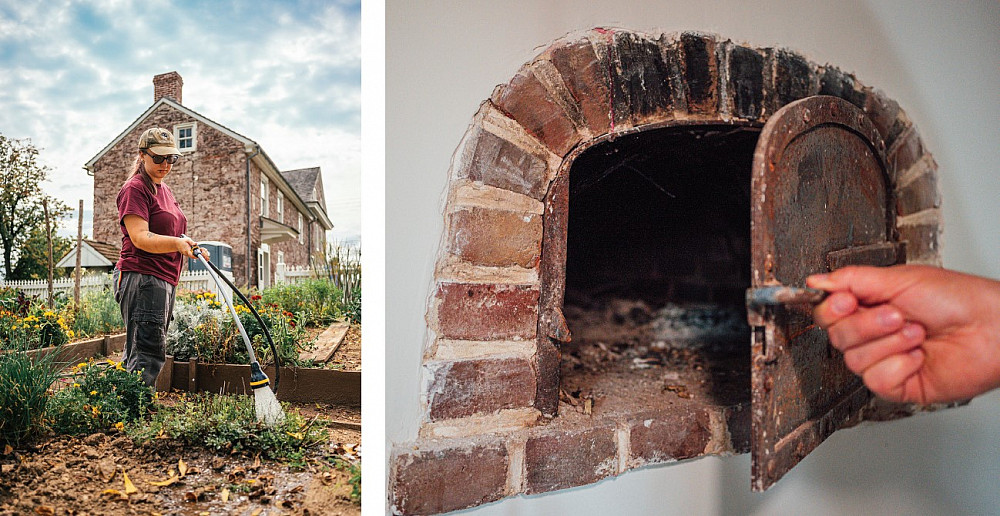
An Historic Celebration
Today, Minardi is still piecing together the history of the home. One ceramic fragment is evidence of what the Muhlenbergs may have cooked meals in or served meals on, so Minardi can use it to find period-appropriate items to furnish its rooms.
The archaeology work also helps tell a more complete story of the evolution of Main Street businesses over time.
“There used to be a general store here and it was the nexus of exchange between the local farm community and the major seaport of Philadelphia,” Minardi explained. “Muhlenberg was the conduit through which all commerce flowed.”
Along with the archaeology class, the Speaker’s House serves as a center for community events. A “Kids Dig History” program has allowed children to come and take part in some of the excavation of artifacts from the property.
“I’d see the kids holding out their hands saying, ‘Look what I found!’ It was real stuff, so you know, maybe one of those kids becomes an archaeologist,” Minardi said.
Ursinus students of all majors remain engaged throughout the academic year, as do students from the local school districts. Professor of Biology Rebecca Roberts even serves as a tour guide.
“I find it’s a place to share, learn, and reflect on where we came from and where we are going as a country,” Roberts said. “My own children have become engaged with the property as well.”
Minardi is also planning to launch a historic foodways program, where food will be harvested from an on-site garden, and cooking and baking classes will take place in the newly renovated historical kitchen—using the bake oven. There’s also a farm stand on Saturdays, where they sell vegetables, cheese, eggs, and other fresh produce.
“For me, it’s a way to pay it forward,” Minardi said.
The full renovation is set to be complete by 2026 during a crescendo of American history in the area. Minardi is among several community partners, including the Valley Forge Tourism and Convention Board and America250PA, planning events which, in addition to the PGA Championship, MLB All-Star Game, and FIFA World Cup, is expected to attract more than a million tourists to Montgomery, Chester, Bucks, Delaware, and Philadelphia counties.
“We hear a lot from people who don’t realize how important the Muhlenberg family was to American history,” Minardi said. “It’s not just a local story. It’s a county, state, and nationally important story.”
And it’s one she’s proud to tell.
